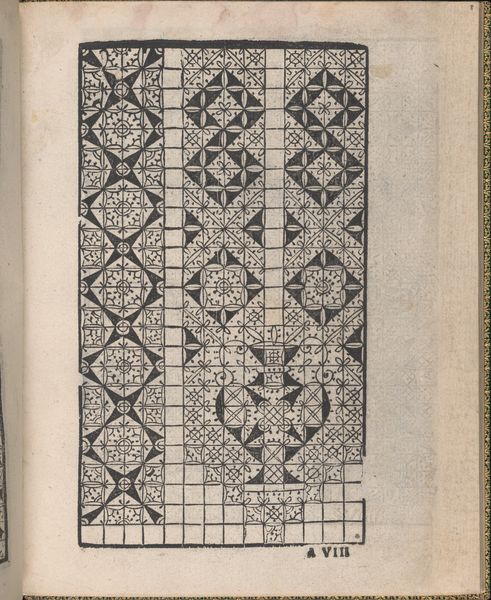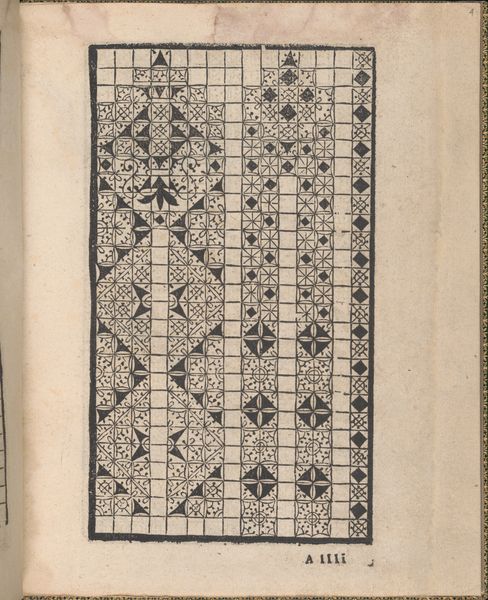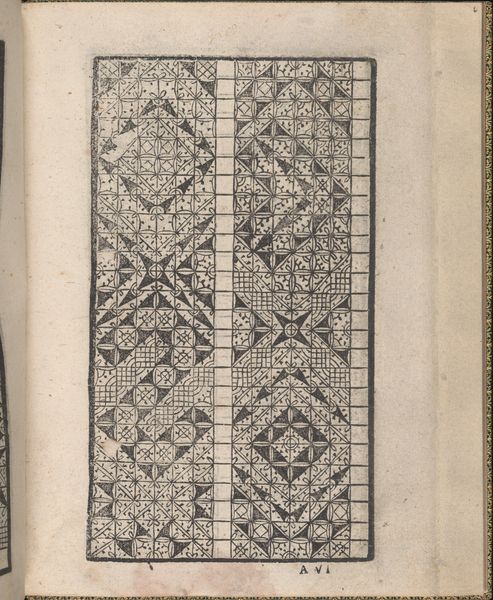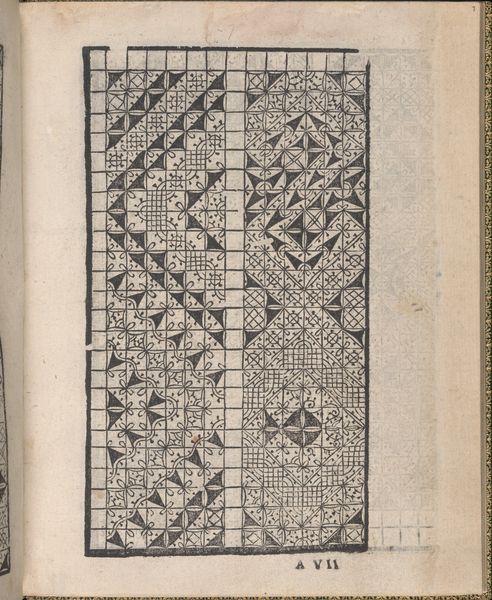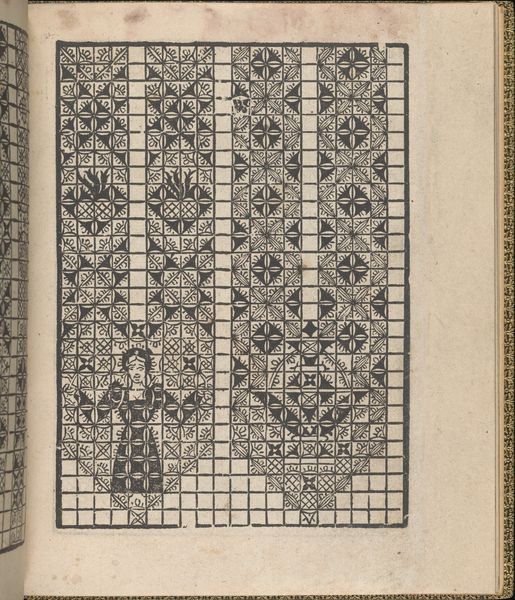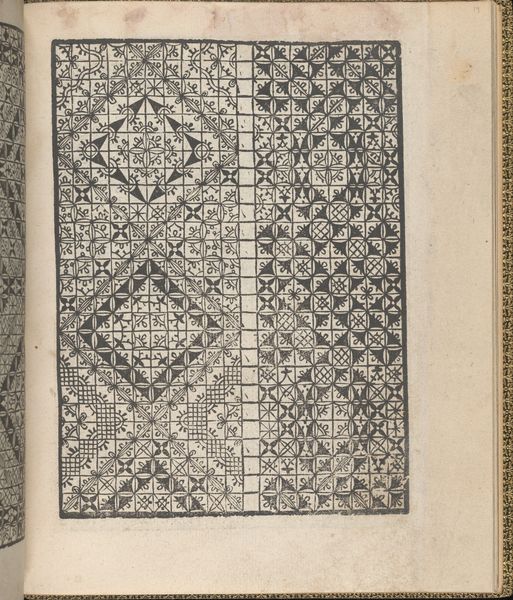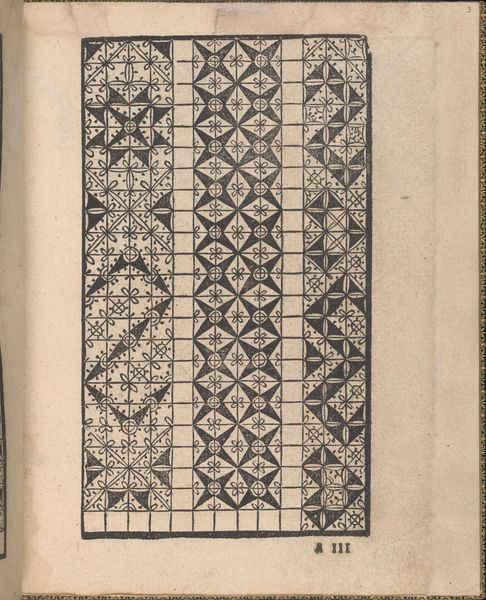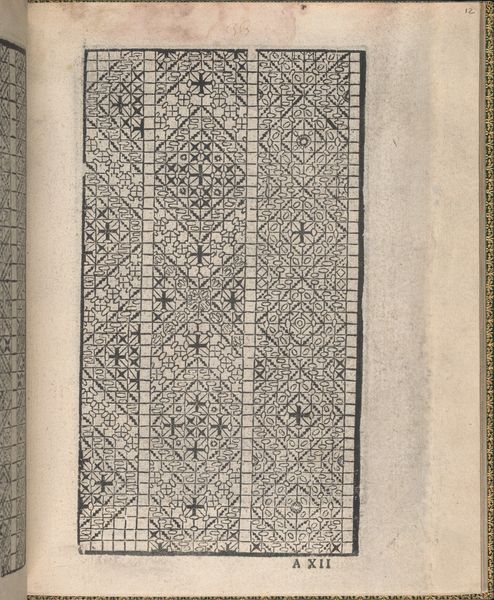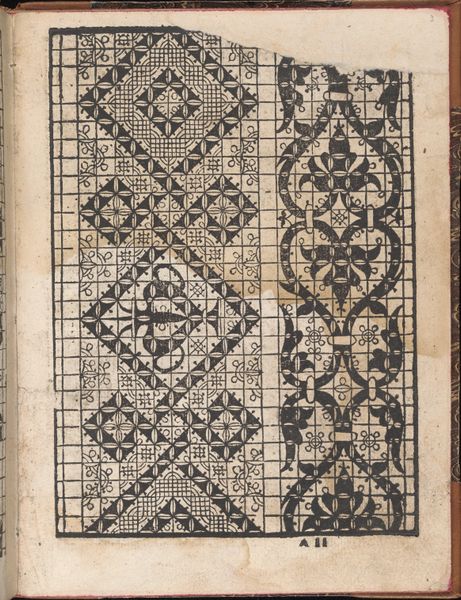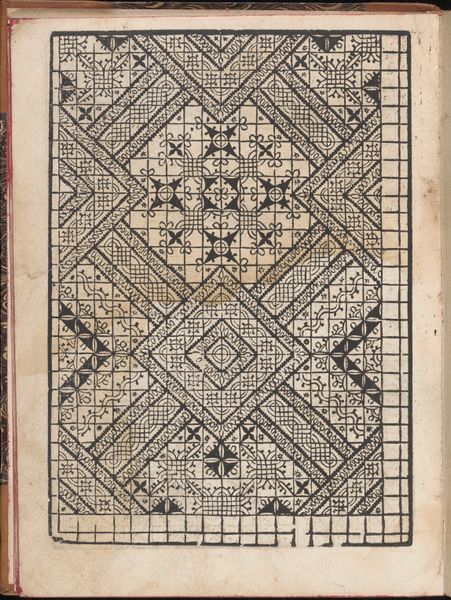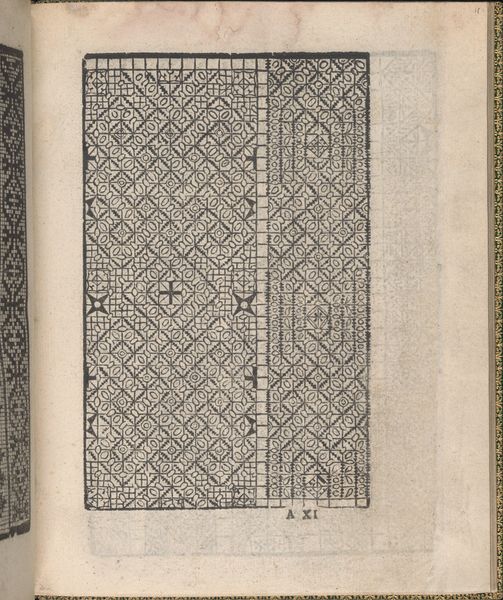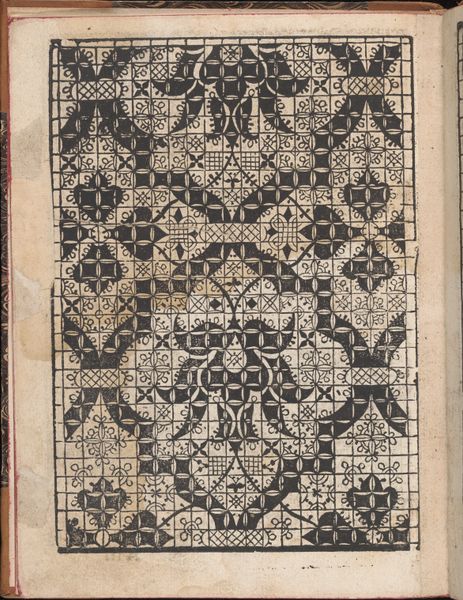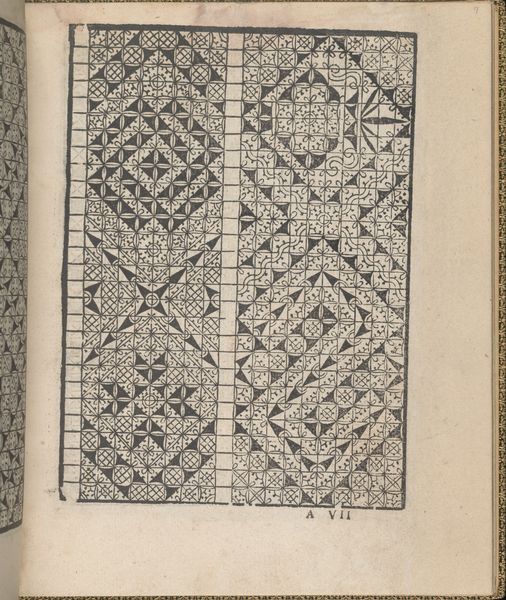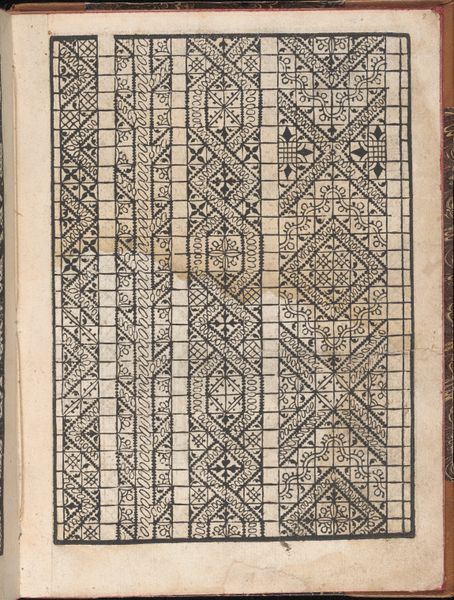
Ornamento delle belle & virtuose donne, page 3 (verso) 1554
0:00
0:00
drawing, graphic-art, ornament, print, engraving
#
drawing
#
graphic-art
#
aged paper
#
ornament
#
toned paper
#
homemade paper
#
paper non-digital material
#
muted colour palette
#
ink paper printed
# print
#
book
#
sketch book
#
paper texture
#
11_renaissance
#
personal sketchbook
#
engraving
Dimensions: Overall: 7 1/2 x 5 7/8 in. (19 x 15 cm)
Copyright: Public Domain
Curator: Here we have "Ornamento delle belle & virtuose donne, page 3 (verso)" an engraving by Matteo Pagano dating back to 1554. Editor: My first impression is how precise and meticulous the patterns are. It feels almost like a meditation on symmetry and repetition. But, tell me, what's particularly striking about this piece from a materialist perspective? Curator: What interests me is its function as a pattern book. The book was made to be used by women who made lace and embroidery, providing templates for intricate designs. The act of reproducing and adapting these patterns allowed women to generate income. These patterns became raw material to be put into use for purposes beyond artistic appreciation. Editor: That context shifts everything! It reframes our understanding of artistry, right? Not simply as individual expression but as communal practice, tied to female labor. How does this manual influence what we now consider "high art" versus craft? Curator: Absolutely. Consider the economic and social implications: Lace-making was a significant source of income for women across various social strata, giving them some degree of economic agency. This artwork captures the circulation of images and its use to shape taste and artistic sensibility, beyond the elite. It underscores how artistic skill intertwined with craft was accessible to broader segments of society. Editor: So the book is not just about the images themselves, but about access to a means of production. How radical! Thinking about gender and commerce this early is surprising. The way these designs facilitated the production of beautiful objects, giving women more agency in a patriarchal structure is definitely something to celebrate. Curator: Exactly! By appreciating this, we consider both the material labor involved and the agency facilitated for women in the creation of luxury goods. It ties back into questions around the means of production of luxury goods and artistic forms in Renaissance society. Editor: This makes me wonder what stories each recreated pattern could tell. I like ending here on the endless potential behind such a deceptively simple artifact. Curator: I agree. And thinking about how a design can empower...well, that's a story always worth revisiting.
Comments
No comments
Be the first to comment and join the conversation on the ultimate creative platform.
